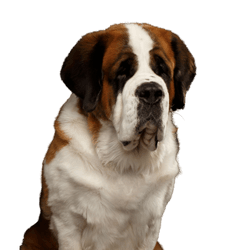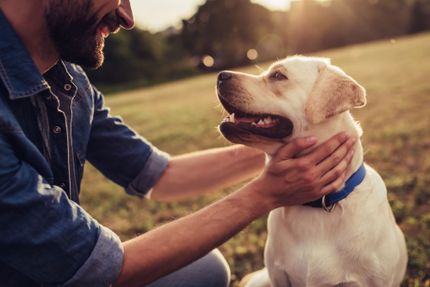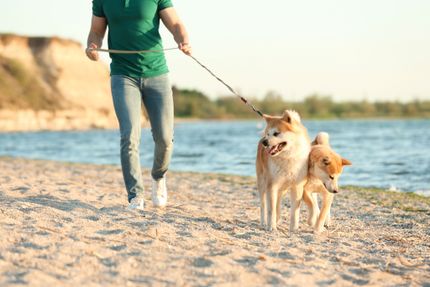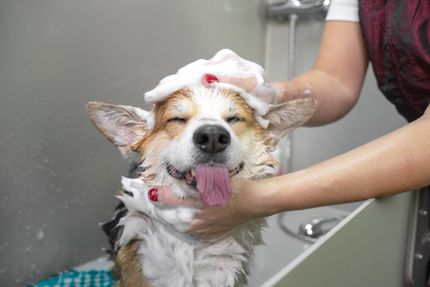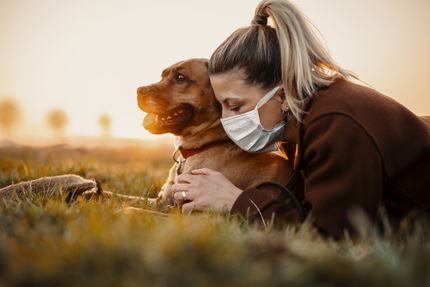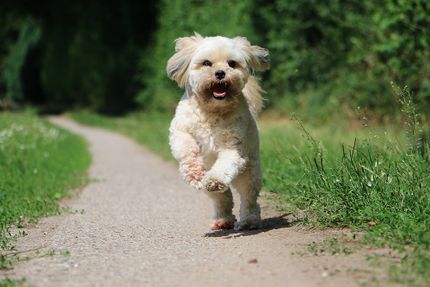Labernard:Saint Bernard and Labrador Retriever Mix
Facts & Origin
Labrador Retriever and Saint Bernard mix - a hybrid breed.
Looking for a big, cuddly dog for your family? Why not consider a Labernard? These gentle giants are good with children and are loyal, loving companions.
Saint Bernard-Labrador mix dogs, also known as Berador, are a popular blend of two of the most popular dog breeds in the world. St. Bernards are known for their size, strength and toughness, while Labradors are considered intelligent, friendly and easy to train. A Berador will likely have some of the positive traits of both parent breeds, making them wonderful family dogs and companions. However, they can also be challenging as they require a lot of exercise and training to stay happy and balanced. However, if you are willing to take on the responsibility of a St. Bernard-Labrador mix dog, you are sure to get a lot of joy and love from your new pet.
| Alternate Name | Berador |
| Origin | Switzerland - UK |
| Life expectancy | 8 - 14 years |
| Care requirements | high-maintenance - low-maintenance |
| Activity level | average |
| FCI group | not recognised |
| AKC group | not recognised |
| KC group | not recognised |
More Saint Bernard mixes
More Labrador Retriever mixes
Attitude, character and temperament of the breed
Possible character traits of Labrador Retriever and St. Bernard mix - Such is probably his nature.
Among mixed breeds, the Labrador Retriever and Saint Bernard mix is a popular breed. Often referred to as the "Labrador-Bernard," this mix combines the best of both worlds - the energy and affection of the Labrador with the calm and loyalty of the St. Bernard.
Labradors are known for being friendly, outgoing and energetic, while St. Bernards are more reserved and quiet. However, both breeds are incredibly loyal and make excellent family dogs. They are best suited to a home with plenty of space, as they need plenty of exercise and room to play.
Like all mixed breeds, the Labrador Bernese can inherit any combination of traits from both parents. However, they usually have a life expectancy of 10-12 years and are relatively healthy overall.
If you are looking for a loyal, affectionate, and family-friendly dog, the Labrador Bernese mix is an excellent breed to consider. They do require a bit more care and space, but they are well worth it!
Character
Usage


Health and breeding information
What diseases can affect Labrador Retriever and Saint Bernard mix.
There are many different diseases that can affect the Labrador Retriever Saint Bernard mix. Some of the most common are hip dysplasia, elbow dysplasia, and bloat. Hip dysplasia is a condition where the hip joint does not develop properly and can be very painful for the dog. Elbow dysplasia is a similar condition that affects the elbow joint. Bloat is a condition where the stomach bloats and twists and can be life threatening if not treated immediately.
What does this mixed breed look like?
The Labrador Retriever Saint Bernard mix has a dense, lush coat that is brown and white in color. The coat is so dense and full that it often looks like the dog is wearing armor! The coloration of the coat is due to the fact that the Labrador Retriever parent is brown and the Saint Bernard parent is white. They are also relatively high maintenance, requiring regular brushing and bathing.
What are breed characteristics of this mix dog?
The Labrador Retriever Saint Bernard mix is a large, muscular dog with a thick coat. It typically weighs between 35 and 45 kg and has a shoulder height of 60 to 70 cm. They have a broad head with a short, blunt muzzle and a black nose. Their eyes are brown or black and their ears are medium sized and floppy. They have a strong, powerful body with a deep chest and a thick, muscular neck. Their tail is long and thick, and they have webbed feet that make them excellent swimmers.
| Fur length | medium - short |
| Fur | flat coated |
| Ear shape | Triangle |
| Tail | fanned out - lang |
| Anatomy | strong, rugged, massive |
| Size ♀ | 55 - 80 cm |
| Weight ♀ | 25 - 120 kg |
| Size ♂ | 57 - 90 cm |
| Weight ♂ | 29 - 120 kg |
| Suitable For | - |
Known Diseases
Epilepsy
Definition: Dog has epilepsy if, for example, at least two epileptic seizures occur more than 24 hours apart.
Cancer
May be common in older dogs.
Skeletal disorders
IPA, FPC and OCD occur in dogs at four to five months of age during the most severe growth spurt.
Eye diseases
Often occur with allergies and intolerances.
Elbow dysplasia (ED)
Elbow joint dysplasia is a chronic disease complex of the elbow joint of fast growing dog breeds.
Joint damage
In some breeds, joint damage can occur later in life, affecting the musculoskeletal system.
Hip dysplasia (HD)
The hip dysplasia or hip joint dysplasia of the dog (HD) is a maldevelopment of the hip joint.
Overweight
Often, unfortunately, the dogs very much under excess weight. But the dogs themselves are never to blame!
FAQ
-
A Labrador Retriever and Saint Bernard mix can reach a size from large to extra large. They usually weigh between 35 and 45 kg and have a shoulder height of 60 to 70 cm.
-
A Labrador Retriever-Saint Bernard mix can inherit the physical characteristics of both parents, but most resemble a Saint Bernard more than a Labrador Retriever. They have a large, muscular build and a dense coat that is usually black, brown or brindle in color. They have a long tail and drooping ears, and their face may have the characteristic "St. Bernard mask" of black fur around the eyes.
-
A Labrador Retriever and Saint Bernard mix is usually a friendly and good-natured dog. They are loyal and devoted to their family and make excellent companions. They can be protective of their home and family and wary of strangers, but they are not usually aggressive.
-
A Labrador Retriever and Saint Bernard mix needs moderate exercise. They should be walked daily and have plenty of opportunity to play and romp. They are not suitable for life in an apartment or a small house without a garden.
-
A Labrador Retriever and St. Bernard mix has high maintenance needs. Their thick coats need to be brushed several times a week to prevent matting and tangles. They also need to be bathed regularly to keep their coats clean and healthy.
Useful Articles
You can find articles that might interest you in the dogbible blog to match your favorite breed.
Visit our magazineto stay up to date on dog trends.
To find out more, view our Privacy Policy
Find here the breed that suits you and find out what character traits it has. Here you can also learn more about the origin, size and weight of your favorite breeds.
Matching your favorite breed, you'll find articles that might interest you on the dogbible dog blog.
Capturing special moments with your four-legged friend - ideas and implementation
